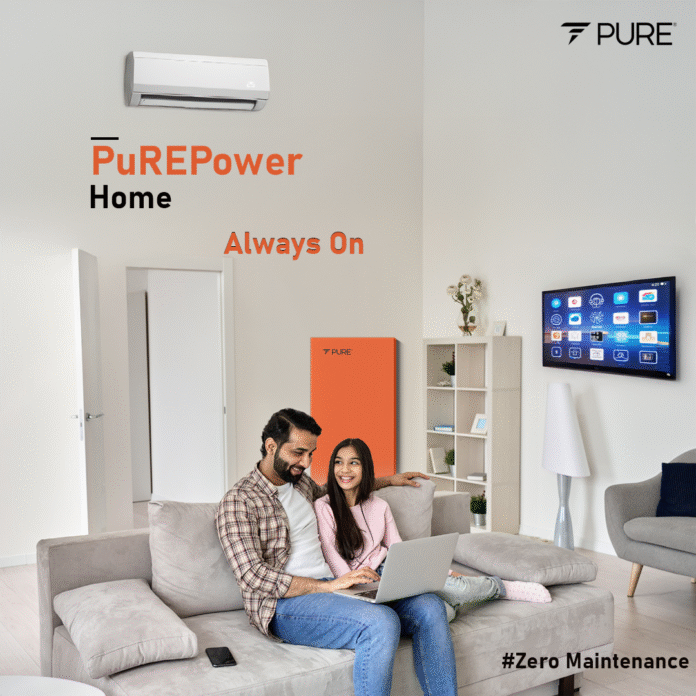Let’s be honest—nothing kills a good mood faster than a power cut. You’re halfway through your favorite show, popcorn’s ready, and poof, everything goes black. If you live in India, you already know the drill. Whether it’s a sudden voltage drop or the endless monsoon outages, electricity cuts feel like that annoying cousin who just won’t stop showing up uninvited. That’s why more and more people are finally waking up to the idea of investing in solid power backup solutions for home. And trust me, it’s not just about convenience anymore—it’s about keeping life running even when the lights don’t.
Why everyone suddenly cares about backup power
A few years ago, having an inverter at home was like owning a treadmill—nice to have, but mostly for emergencies. Now, it’s practically a necessity. Our homes have turned into mini offices, schools, entertainment hubs, and whatnot. Every device—from routers to refrigerators—demands power, and we can’t just sit around waiting for the grid to recover. People are realizing that a few hours of blackout can ruin an entire day’s productivity. Plus, the memes on Twitter about people losing Wi-Fi mid-Zoom call are painfully relatable.
What’s changed in the power backup game
Gone are the days when a noisy, diesel-chugging generator was your only option. These days, there’s a smarter way to handle outages. Companies like Pure Energy are offering systems that are cleaner, quieter, and way more efficient. What’s cool is that they’re also integrating renewable sources like solar panels, which means you’re not just saving yourself during a blackout—you’re doing the planet a solid too.
And the best part? These solutions aren’t just for the rich or tech geeks anymore. The prices have come down a lot, and installation is easier than ever. I recently saw someone on Reddit mention how their entire 3BHK home runs on a hybrid solar-battery setup, and it cost them less than what most people spend on a new iPhone every year. Kinda puts things in perspective, doesn’t it?
The types of power backups (and how to not get confused)
Okay, let’s simplify this because energy jargon can sound like rocket science sometimes. You’ve got three main types of systems that most homes use. First, there’s the classic inverter-battery combo. It’s the one most Indian households already rely on. Works fine for basic stuff—lights, fans, maybe a TV or computer. Then there are solar hybrid systems. These are becoming super popular because they let you charge your batteries using sunlight during the day and switch automatically when power cuts hit. Finally, there are advanced energy storage systems that can handle higher loads, even ACs and washing machines, without breaking a sweat.
Personally, I think the hybrid route makes the most sense. You get free solar power during the day, and your batteries stay ready for the night. It’s like having your cake and eating it too, minus the calories.
The hidden savings no one talks about
Here’s something most people don’t realize: a good power backup doesn’t just help you during cuts—it actually saves money long-term. Frequent voltage fluctuations can damage electronics, especially those expensive smart TVs and refrigerators. A stable backup system regulates that. I had a friend who spent ₹20,000 on repairing her fridge’s circuit board after a power surge. That’s almost half the cost of a decent inverter setup. So yeah, prevention is cheaper than cure, especially when it comes to electricity.
Also, energy-efficient systems like the ones from Pure Energy are designed to reduce waste. Over time, that efficiency means lower electricity bills, especially if you’re using solar backup. It’s one of those rare cases where doing something eco-friendly also makes financial sense.
The reality check (and a bit of humor)
Let’s not romanticize it too much though. Getting the right power backup system isn’t always smooth sailing. You’ll probably spend a few days researching options, get confused between kilowatt ratings and battery capacities, and argue with at least one electrician. But once it’s done, you’ll wonder why you didn’t do it sooner. It’s like switching from a feature phone to a smartphone—after a while, you can’t imagine going back.
And if you’re worried about maintenance, relax. Most modern systems come with smart monitoring features that tell you when something’s off. Some even send updates to your phone, which feels very sci-fi until you realize it’s just reminding you to clean the solar panels.
Social media’s new energy obsession
It’s funny how online communities are turning into mini energy think tanks. I came across a YouTube video last week where someone built a DIY solar setup on their balcony in Mumbai—and the comments were full of people asking how to do the same. On X (formerly Twitter), the hashtag #SolarHomes has been trending in India, with users posting their monthly savings screenshots like it’s a badge of honor. You know something’s mainstream when influencers start flexing their battery backup setups.
The bottom line (if there even is one)
Power cuts aren’t going anywhere soon, but how we deal with them definitely is. The shift toward power backup solutions for home isn’t just about keeping your lights on—it’s about future-proofing your lifestyle. We’ve reached a point where uninterrupted power isn’t a luxury anymore; it’s a basic need, like Wi-Fi or coffee.

